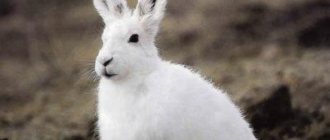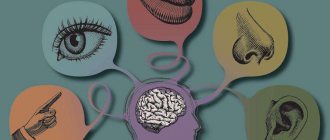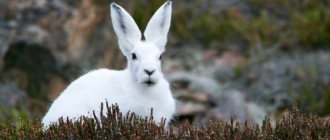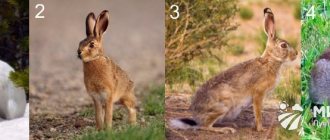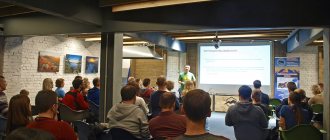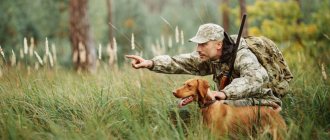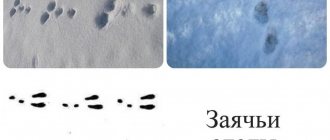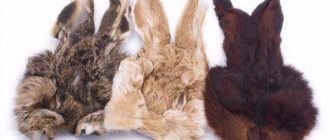How to beat a young hound on a hare
Raising a hound should begin from puppyhood. By the time a dog should start hitting a hare - this is done from 10 months - it should be able to:
- come to the hunter at the sound of the horn;
- throw the prey on the command “Open!”;
- obediently follow the hunter without a leash;
- do not take food without command;
- do not react to pets;
- be accustomed to different soils and forests.
Remember! Training should not begin too early, before the hound has fully developed its musculoskeletal development. This will harm the dog's development.
The race takes place in areas where hares live. It is advisable that the area does not abound in animals, otherwise the young hound may simply become confused and not learn to untangle the tracks. Hare training is carried out from the end of April to the end of May.
The first outings should be done for 2-3 hours a day so that the hound does not get tired. Experienced hunters advise carrying out the first training with an experienced dog, but after 2-3 joint trainings the hound should be allowed into a solo training.
The race should be carried out exclusively on black tops. If you train in the snow, the hound will get used to finding tracks visually, rather than using scent. When carrying out the training, you should encourage the puppy with the words “Come on, come on! Wake up! They increase the hound's excitement and show it where the hunter is.
Read more about how to hunt a hare with a dog.
The hound should be trained in different weather conditions, with the exception of rain, in different areas: meadow, open forest, thicket. A young hound, chasing a hare, will lose him as soon as he makes the first discount. In this case, to develop the viscosity of the hound, the hunter should encourage it with words, make it run around the lost track, so that it learns to untangle the hare's loops.
Tips on how to best train a hound
The primary task in training a hound is to awaken most clearly its innate instinct of searching for the animal and then pursuing it with barking. But the dog must find the animal and chase it correctly, as required by hunting canons and common sense. Even a simple, untrained mongrel can simply chase an animal headlong, while wailing throughout the entire neighborhood. This is not the job of a hound at all. And a good hunter, of course, understands this.
For a hunter, what is most important is how exactly the hound performs its task. After all, sometimes a dog works on an animal in such a way that its owner not only remains with trophy prey, but also receives incomparable pleasure from the hours spent with his excellent messenger on the hunt. The work of a poorly trained hound can be boring, uninteresting, and not promising the owner anything but fatigue and disappointment.
Assessment and development of the field qualities of the hound
By carefully observing the work of a hound, you can determine and note for yourself not only its overall performance, but also certain pronounced innate field qualities. In general, a dog inherits most of its field hunting qualities from its ancestors. It is very important to take puppies only from pedigree producers who have distinguished themselves with decent work in hunting.
Some of the qualities inherited by hounds, such as voice, flair and speed (the ability to quickly pursue a found animal), cannot be improved by any training. The dog remains the same as nature (and the breed) endowed it. Other qualities are also inherited, but they can be developed and improved in the process of training. For example, viscosity can be changed (the passion for hunting, which motivates the dog to stubbornly and relentlessly pursue the animal). Such qualities also include crawling (the manner of searching for an animal) and resistance (the strength qualities of a dog that contribute to its long-term work). Any of these qualities can only be strengthened by regular hunting practice.
Secrets of correct training
So, the hunter’s goal is to bring to life the innate hunting instincts dormant in the dog, and then develop them as much as possible, strengthening them with practice. This is necessary to get a reliable and smart hunting assistant. Typically, professional training of hounds begins at 10 months of age. Spring litter puppies begin to be groomed in April-May of the following year. Then in the fall of the same year the dog will finally consolidate the experience that it received in the spring.
By the beginning of the main hunting season for hounds (October-November), the dog will be fully prepared for work. Outside the hunting season, hounds are hunted in areas that are specially designated for such a purpose. If there are no such lands nearby, then the hunter is forced to start chasing the hound only a month or two before the hunting season. It is impossible to train a dog well in such a short period of time, but over the years the hound will gain experience and, with the right approach, will become a good hunting dog. It will just take longer.
Even before starting the actual training with a grown-up 6-7 month old puppy, you need to make first short and then longer forays into the field and forest. You need to walk with the dog along ravines and through thickets of bushes. The puppy will not only benefit from fresh air while accelerating, but will also begin to acquire the ability to clearly and quickly navigate the forest. The young dog gets used to its surroundings, struggling with the fear of getting lost, and begins to boldly move greater distances from its owner. In the future, this will help in the development of climbing and the ability to meaningfully use your instincts.
It is necessary to introduce the puppy to domestic animals as early as possible, not only in the yard, but also on forays into the field. The most important point is to achieve complete indifference of the hound to domestic animals without losing interest in the wild animal. A good hound, seeing a cat or sheep grazing in a field in the yard, will not show wariness and will not try to rush at them. When walking a puppy and a little later training a young dog, the hunter must be attentive. In the first case, he is dealing with a growing dog, in the second, with a grown but fragile dog. You cannot allow a young hound to become overworked - you could ruin the dog.
Starting the real hunt, the hunter goes with the hound into the forest or other hunting grounds with an abundance of hare or fox. Having arrived at the place, you need to let the dog out of the fold. Those hounds who have been in the forest more than once since puppyhood immediately boldly leave their owner and go deeper into the forest, bushes or ravines. They begin to sense smells that interest them. Sometimes a young hound finds an animal on its own without much special training.
It happens that a dog, having moved only 30-50 steps to the side, immediately returns to the hunter, then moves away again and soon returns to the feet. They try to be in sight of their owner all the time. There are also very timid puppies that stay only at their owner’s feet, not wanting to move a single step. In these cases, the hunter must leave the clearing or compacted road and go deeper into the forest. There, constantly encouraging the dog by searching and shouting, you need to gradually encourage it to climb on its own.
It is sometimes worth stopping for a while in places where there is the greatest likelihood of finding a hare. Even the most timid dog, sensing a hare, will first hover around the hunter’s feet, and then instinct will force it to move away. Unfortunately, inexperienced hunters often make a fatal mistake. They begin to vigorously drive the dog away from them, sending it crawling. Sometimes it even comes to using arapnik. This must not be done under any circumstances! The dog, not understanding why the owner drives it away, becomes even more timid. After the forceful measures, she will walk away from the hunter, but all her attention will be focused only on him, on his actions and reactions. Hunting should be a pleasure for a dog, only then its qualities will manifest themselves at their best.
Hearing the hunter's encouraging shout, the young hound becomes bolder much faster. She begins to go deeper into the crawl and get involved in the hunting process. Over time, she will become so familiar with the field and forest that she will feel free in them, “at home.” It is important to adjust the speed of the hunter’s movement to the pace of the hound so that the dog does not end up either too far ahead or too far behind. Then the actions of the hunter and the hound will be harmonious, and the hunt will become more effective.
Hare hunting in winter with hounds
It hunts better in cloudy, windless weather. Dry frosty air makes it difficult to follow the trail, and in such weather the dog can become hypothermic and get sick.
In winter they hunt:
- along the blacktop;
- along the white path;
- along the piebald (variegated) path - the snow on the path has melted in places.
You should go out in the dark so that when it dawns you can be at the hunting site. At such times it is easy to find a fresh hare trail. In the event that the hound cannot follow the trail, the hunter should make some noise to raise the scythe.
Attention! You should not hunt in deep snow. This is fraught with injuries (broken paws) and hypothermia in hounds.
Training a hound for a hare. WE MAKE A WORKING DOG OUT OF A HOUND, ALL THE SUBTRACTS AND SECRETS.
Contents of the article (click to view)
What is the essence of hunting with hounds?
Hare hunting is not an easy task , which has its own characteristics:
- The weather plays an important role. It is better to choose a cool day without rain, when it is easier to drive the hare out of its bed. In warm weather, it is impossible to do without loud noise and additional effort.
- In areas with tall grass, the task of searching for a hare in the thickets is assigned to the hunter, since it is difficult for hounds to get through the thickets.
- The hound needs time to prepare for the hunt, to search for the scent of the animal. As soon as the hare is raised from its bed, the dog must be directed and urged on, stimulating it with shouts and gestures to chase the hare.
- Most often, hunters reach an agreement that they do not shoot the hare immediately (as soon as they find it), but give the hounds the opportunity to drive it. This allows you to enjoy the hunting process.
Start of hunting season
You can start hunting with hounds in the fall, in mid-October. Sometimes this deadline is shifted by two weeks, to the beginning of November. The season closes before the first snow, in late November or early December.
Experienced hunters believe that setting a dog on a hare should be done according to the so-called. “black path”, on which there is no snow, and, accordingly, hare tracks. Otherwise, the dog will get used to ready-made tracks and will not be able to track the hare on the ground. If there is snow in places, then it is very difficult for the hound to track down its prey; it has to constantly adapt to changing conditions.
Articles on the topic (click to view)
Beagle dog owners practice waking up early. The hunt takes place before dawn. This contributes to the successful search for hare tracks and beds. In order for a hare to get up from its rest, a loud noise is required. This is why hunting is a group event. After the hounds have picked up the scent, the hunter needs to take his position in anticipation of the hare.
What should a good hound be like?
The main sign of a good hound is its impeccable sense of smell. The scent glands of the hare are located on the pads of the paws. For this reason, it is very difficult to track down an immovable animal. When driving a hare from its resting place, the hound picks up the scent of the prey and pursues it. Endurance is no less important for a hound. Chasing prey for many hours requires a large supply of energy and strength.
At the same time, the hunter must understand that the dog is not his servant, but a partner, on whom he depends no less than on a person. Respect for your “colleague” makes the hunt productive. In essence, the hunter plays the role of a mentor who guides the hound along the right track.
How to train a hound to chase a hare?
Dog training should be done regularly throughout the year. Tasks that are different from each other guarantee better results. Particular attention should be paid to the physical training of the hound - running loads and preparing the paws for the forest (the hardened pads on the dog’s toes will ensure safety when moving over rough terrain). One option for training a hound to run at a stable, but not maximum, pace is to walk next to its owner riding a bicycle. The faster the dog chases the hare, the faster it will run away. At a low pace of the chase, the hare will periodically stop, which will make it easier for the hunter to aim and shoot.
Autumn hunt
At the beginning of the hunting season, the hare is not yet scared, so it is easier to catch it. The optimal month for hunting is November, when the weather is humid, the trees have lost their leaves, the plants have withered and fallen to the ground. In such conditions, the work of a hare hound is characterized by stability and high viscosity.
In the fall, hares most often arrange roosts near winter crop fields, sometimes even in the fields themselves, if the height of the vegetation allows.
The oblique moves away from pursuit in circles, often zig-zagging and returning to its resting place. Therefore, it is best for the hunter to:
- wait for the hare not far from the roosting area;
- do not lash out at the dog’s voice, unmasking yourself, scaring away the hare;
- carefully monitor the hare’s runs, determining the trajectory of its loops;
- When in ambush, behave extremely quietly.
You should shoot in the side of the animal so as not to injure the dog following it.
Find out what shot to use when hunting hare.
Hunting with a hound
Methods of hunting with a hound, as already mentioned, meet the most basic requirements for the help of a four-legged friend and assistant. Based on these principles, hunting with a hound is divided into two main types - complete, when with the help of hounds the animal is exposed to a pack of greyhounds, and walking with a gun, which is currently the main one. Complete hunting was often practiced for the “red beast,” wild boar, and other ungulates. It was used, first of all, for mass hunts, for squeezing animals out of steppe stakes under horsemen and under packs. The foot armory can develop in a very wide range. Hare hunting with hounds is popular, as well as wolf and fox hunting, wild boar, guran and even bear, which requires both certain qualities of the dog and special training for hunting and the experience of all members of the hunting team.
Hound or spaniel on a hare
Hunters often argue among themselves, proving that it is their dog that is best suited for hunting a hare. However, in addition to subjective ones (personal preference), there are also objective indicators of breeds that will influence the choice of dog. First, let's look at the canine characteristics:
| Index | Spaniel | Beagle |
| Adaptability | 5 | 4 |
| Education and training | 5 | 5 |
| Grooming | 3 | 2 |
| Friendliness in an unfamiliar environment | 4 | 4 |
| Child Friendly | 4 | 3 |
| Friendly to other dogs | 4 | 3 |
| Game activity | 4 | 5 |
| Intelligence | 5 | 4 |
| Apartment ratio | 4 | 2 |
| Observation | 5 | 5 |
| Need for exercise | 5 | 5 |
| Social need | 4 | 3 |
| Tendency to bark | 2 | 3 |
| Territoriality | 3 | 5 |
| Shedding level | 3 | 3 |
As can be seen from the table, both breeds have a high degree of adaptability, are easy to train, observant, have high intelligence, are quite friendly, and shed moderately. Both breeds require long periods of walking to satisfy their exercise needs. However, you should pay attention to the differences.
| Beagle | Spaniel |
| They need space. A large yard and a long walk are what is vital for a hound | Gets along well in an apartment. |
| Requires an owner with a strong-willed, strong character, tries to dominate in the absence of such | Friendly with all family members, gets along well even with small children |
| Height at withers 55-65 cm | Small dog, easy to transport |
| Skeleton and muscle mass are fully formed by 10 months | The skeleton and muscle mass are fully formed by 7-8 months - from this age you can train game |
| They hunt wolves, foxes, hares; able to follow the scent of wild boars and bears | They hunt pine, field, marsh, and waterfowl; small game (hare, squirrel) |
Based on the above, we can summarize:
- if you live in an apartment, you have a family with small children, and you do not plan to hunt big game, then your dog is a spaniel;
- If you have a yard, somewhere to walk your dog for a long time, and you are not interested in hunting birds and small game, then your dog is a Russian hound.
The best dog for a hare
Hare hunting is an exciting and gambling activity. However, it requires good physical preparation from both the hunter and his dog.
Requirements for the dog:
The following groups have these qualities:
Hounds
Hounds are one of the most ancient breeds. Their main purpose is to corral wild animals and help the hunter in catching the animal. The current purpose of the dog is to drive out prey before the hunter shoots. Hounds have a fairly narrow specialization, and are also divided on territorial grounds.
There are the following subspecies:
The main differences between them are color and size. The smallest of the three, the Estonian Hound has about 52 cm at the withers, so it is difficult for her to follow a scent in loose snow. Otherwise, it is the same wonderful working dog as the Russian or Russian piebald hound.
Estonian hound
These breeds are great for hunting hares, foxes, even wolves. However, during training, special attention should be paid to working on the scent. It happens that a young hound, working on a hare, can suddenly switch to a fresh track of ungulates and lose interest in the oblique. Such cases must be stopped immediately.
The hound needs space. It is strictly not recommended to keep it in an apartment. The dog also needs long walks, during which it can run and chase. The hound's character is calm, however, it needs a strong-willed, strict owner, otherwise the dog will try to take over dominance.
Greyhounds
Greyhounds are a breed of dog bred specifically for hunting. It is this group of dogs that holds the speed record. Therefore, if the question arises, which dog will catch the hare, then it is definitely a greyhound.
Greyhound
Subspecies of greyhounds are divided according to territorial characteristics. This includes:
Greyhounds' vision is superior to their sense of smell, so they often rely more on sight when hunting. This is also explained by the fact that at the speeds that greyhounds develop, the smell is practically indistinguishable.
Russian greyhound
The excellent speed of greyhounds makes their hunting style similar to that of a cheetah: the greyhound quickly pursues its prey, can catch up and kill the prey in a few leaps, but gets tired relatively quickly.
Training greyhounds requires a special approach, which is determined by the fact that for a long time this breed was kept in enclosures, separately from other animals and people. They rarely communicated with humans, so their owner must also have a strong-willed, strict character.
Cops
Pointers are one of the largest groups of hunting dogs. Their “trick” is to sense prey and freeze, making a stance. They are ideal for bird hunting.
Kurzhaar
This type of hunting dog is also divided into subspecies based on territoriality:
When hunting hares, they usually use German pointers - shorthaired pointers, drathaars, because their habits differ from the habits of other cops, namely, they can be taught not to freeze at the sight of prey, but to persistently work on the scent.
Czech fousek
Summarizing the above, you can see that a hound is best suited for hunting a hare. However, if you are not limited to this prey, but intend to go after the bird, then you should choose a pointer. And to feel like a king - a greyhound.
How to protect your dog from wolves
A serious problem when hunting can be an attack on a dog. Moreover, this is done not only by wolves, but also by wolf-dog hybrids and feral dogs. The latter category is much more dangerous than wolves. They are distinguished by:
- unpredictability of behavior;
- increased aggressiveness;
- habit of staying in large flocks;
- complete absence of fear of both man and hunter.
To know how to protect a dog from a wolf, you first need to know about the habits of wolves:
- usually keep in small flocks of families, but in a hungry winter they can flock into a large flock;
- have their own territory, which they systematically go around;
- avoid human odor;
- They don’t like dogs as competitors for their food supply.
Find out how to track a hare in winter.
So, if there are wild dogs in the forest, then there are no wolves, and vice versa. What to do to protect dogs?
- When going hunting, you should make sure that there are no fresh traces of a wolf's presence. These can be not only paw prints, but ureters, feces, scraps of fur on the branches of trees, bushes along the animal trail.
- Don't let your dogs go too far from you.
- Do not allow the dog to work for a long time away from the hunter.
- Some hunters recommend tying red ribbons to the collar. However, this method is rather dubious. Wolves are not repelled by ribbons, but the human smell, as such, is. The tape can get caught on a branch while chasing prey, thereby, if not injuring the dog, it will “pull” it off the trail, from the pursuit. Recently, vests for dogs have appeared on sale. They will protect your friend from hypothermia. Vests of bright colors - from would-be hunters. A larger surface of the fabric will be more saturated with the smell of people and homes, and accordingly, it will be better at repelling wolves.
- Another tip from experienced hunters is to attach the “butts” of spent cartridges to the collar. Before hunting, pour a little gunpowder into them and set them on fire to provide a strong, lasting smell.
- Mass production offers "body armor" for dogs with Kivlar inserts, collars with spikes, etc.
As you can see, there are effective methods of protection. And everyone chooses their own.
How to properly discipline a hound?
Training for a hound dog is one of the most important components of a good hound dog. After all, only hunting practice can turn a puppy into a real, skillful, competent hunter. Even the most distinguished puppy from well-known manufacturers with a bunch of diplomas and titles can be ruined by incorrect training, so now I want to outline for you the techniques and rules for training hounds, which will help raise worthy hounds, capable of producing excellent hunting results almost every time.
No earlier than a year later, it is necessary to start training a beagle dog puppy, since before this age they are not yet physically developed and strong enough. Take care of your pet - do not go for training before one year of age, otherwise they may sit on their feet or get serious injuries. which will haunt them for the rest of their lives.
Regarding the above, I can make a small reservation. If you have only one puppy, then you can start training a little earlier, for example at the age of eight months, but still remember that you should not give the puppy too much stress. This will negatively affect his health. Estonian puppies A hound can be trained as early as six months, since this breed develops and gets stronger very quickly. The use of certain chasing techniques depends on what kind of animal is being chased, alone or with a bow, or maybe even in a flock.
Since most hunters have one dog, and therefore have to train only one hound, I will pay attention specifically to the training of single dogs. There are two ways to catch up with singles.
1. Race against a free animal.
2. Hunting down a decoy animal.
I would like to note that with one dog you can only hunt hare and fox. Pay attention to the dog’s temperament. If it is very hot and energetic, then start training, as I said earlier, at one year of age, but if the puppy is calm, then training from an earlier age will not hurt him.
First of all, the dog needs to show the animal, so you should choose places with a large number of the appropriate animal. You should not immediately release the puppy from the collar, but you need to walk a little with him on a leash and only then release him. There are several options for the dog’s behavior when descending. Some run far away from the owner, others stay very close, and others stay close. But this does not mean at all that the behavior of the hound will not change over time. Help your pet in searching for the animal by squealing, encouraging, and shouting slightly.
The most successful option is when a young dog picks up the animal thanks to its instinct and it jumps out from under its nose. If the puppy is a real hound, then in this case it will immediately rush after it, uttering a voice. As soon as it loses the animal from its eyes , then he will begin to sniff the trail and occasionally respond. It is at this moment that the hunter should be next to the hound and encourage him in his search, slightly shouting and shouting. If the hound finds the trail and continues to chase, then he will understand why he was taken. This can be said that the foundation for the chase has already been laid. Now it is necessary to allow the dog to work more.
It is not always possible for a young puppy to be able to pick up an animal on his own, so the hunter himself has to go to the places where the animal is most likely to be found in order to motivate him. As soon as he is picked up, the hound should be called to the trail and directed him to the place where the hare or fox ran. Hound dogs respond very well to the words: “Just about there” or “Ay-ay-ay-ay-ay-ay-ay-ala-ala-ala.”
The first rut of a young dog often does not last long. Some do not utter a voice at all during the rut, but these need to be destroyed. Others begin to vocalize only at the sight of the animal. But a true hound, sensing the trail, will certainly rush and burst into voice. Those dogs that do not vocalize in the first fall may not be suitable, but you should still keep them until the second autumn and not rush to conclusions about their unsuitability.
Thus, first the hound needs to show the animal, that is, let the dog understand what it should do. Everything else depends on the innate qualities that nature has endowed it with, but we will talk about them later.
